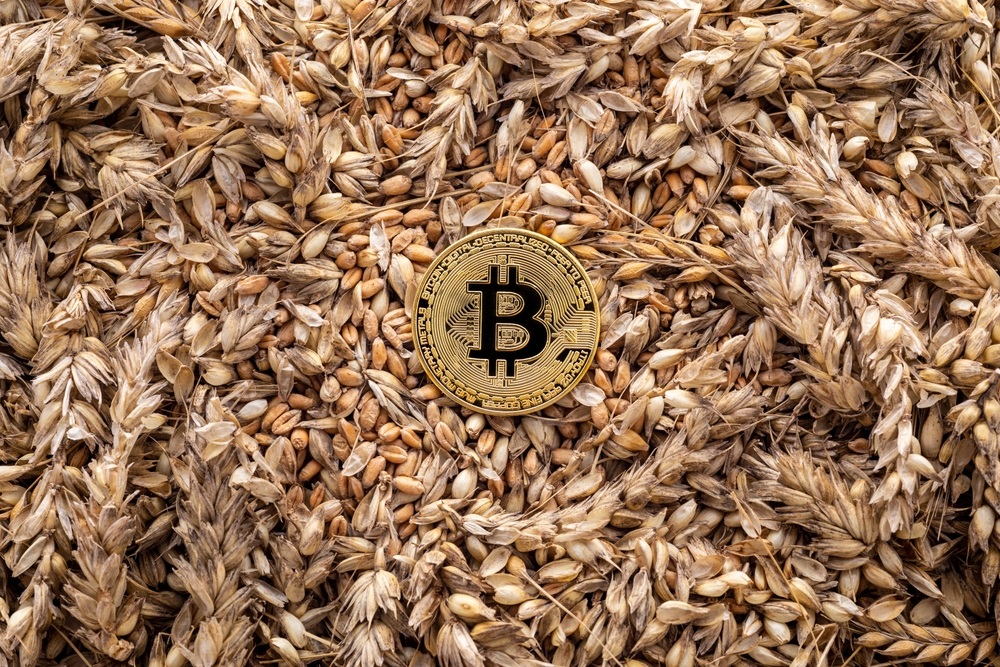Blockchain is a database that keeps account of transactions paired with private and public keys using a specific algorithm. Following that, these transactions are dispersed across a sizable computer network, with a copy of each transaction being kept at each node. The entire industry is being revolutionized by blockchain in agribusiness.
Participants can view information in its most accurate form thanks to the built-in transparency of the blockchain architecture, with changes only being made when all parties consent to the same thing. Supply chains were rife with fraud, so Blockchain technology could help alter things.
Since the creation of bitcoin, the term “blockchain” has become popular, but when it comes to integrating this technology into businesses, cryptocurrencies are not what companies are looking for. What counts is blockchain technology itself. Currently, this innovation is changing a wide range of sectors, including agriculture.
Continual population growth, urbanization, and globalization are factors affecting the world’s population, and they all have an impact on agricultural patterns. There will be 7.8 billion individuals on the planet as of January 2021. According to the World Bank, the population will keep increasing, hitting 9.7 billion by 2050 and 11.2 billion by 2100. Anyone can see that with such a large population, there will be a substantial increase in the demand for food.
Supporters of blockchain technology are starting to apply it to agriculture because it is so important to achieving worldwide prosperity and because it must evolve over time to meet a variety of challenges. But is it really a significant step forward or is it just pointless excavating in a field that has already been sown?

Benefits of applying blockchain to agribusiness
While blockchain technology has grown in popularity, primarily as a result of its invasion of the financial industry, even its most fundamental features and capabilities have the potential to significantly change a variety of sectors, including agriculture.
• Trust and openness
The majority of companies are accustomed to deferring to authority figures or using outside contractors. Blockchain is altering these practices: peer-to-peer architecture, cryptography, and the requirement for transaction and identification verification now guarantee network participants’ trust.
When consumers are aware of the origins of their food and the methods used to transport it, they are also more likely to trust retailers and farmers. Through apps built on the blockchain, they can access all of this data.
• Intermediaries? I decline.
Blockchain eliminates the requirement for a substantial number of intermediaries. You can save money because banks, notaries, and numerous third-party websites are no longer required.
• Once on the blockchain, it’s there to stay
The blockchain contains only unchangeable data that has been timestamped. You can always be positive that the data is accurate because it has been verified by numerous network users.
• Detection of fraud and failure
Although fraud is not entirely eliminated by blockchain, dangers can be significantly decreased. Consider supply chains as an illustration. Such an application becomes very challenging to manipulate because the entire supply chain can be traced through the blockchain and the information is immutable.
• Improving product safety and quality
The agri-food infrastructure is very extensive and intricate. The end user, whose health is significantly influenced by the goods they purchase, requires it to be simplified and improved in addition to farmers, suppliers, and retailers.
Participants in the supply chain can immediately submit new problems using platforms built on the blockchain. Retailers can quickly identify the source of the contaminated food if a foodborne disease epidemic still happens. This facilitates prompt product recalls, protecting customers’ health and even lives in the process.
You probably already know how blockchain technology works and that the food supply chain is one of its primary applications. You are partly correct, but there is a much broader range of blockchain applications that could be used in agriculture, literally from crop planting to the dinner plate of the consumer.
Different Businesses Agriculture and Blockchain Technology
International Yara
Blockchain is being used by Yara International to track the coffee back to its producers. Additionally, they enable customers to see the coffee’s quality and place of origin and even allow them to directly tip producers in order to support them. The “Thanks My Farmer” app, which will let users support farmers, is presently being released.
NV CNH Industrial
In order to improve inventory administration, CNH Industrial NV is utilizing blockchain in the agriculture supply chain. By managing their inventory, this business, which manufactures, develops, and sells agricultural equipment, hopes to provide farmers with better services. They are currently working on a remedy with IBM.
JD.com
One of the largest Chinese e-commerce companies, JD.com, uses blockchain technology to monitor the beef products it imports from other countries. It is currently collaborating with InterAgri of Australia to purchase the Angus meat from the company. They actually intend to use the technology to improve farming operations and audit data pertaining to how the livestock was managed.
BG Bayer
Blockchain technology is being used by Bayer AG to track agricultural goods. The initiative is currently being completed in collaboration with Ant Financial. In actuality, they intend to employ the technology to provide high-quality produce and help with the digitization of farmland. We do not, however, currently know how long the endeavor will take to complete.
L. A. Grain
Blockchain technology is being used by Lawson Grains to improve its grain growing operations. It is currently working on the project’s completion with AgriDigital. They also intend to employ technology to improve gathering services. Once more, they are managing their inventory and delivery method on the platform. This is a fantastic method to display and raise their effectiveness.



